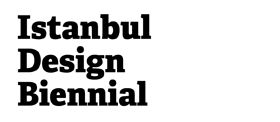From the pages of the ‘New City Reader 01 – Agenda’ comes an essay by the Adhocracy team members Elian Stefa and Ethel Baraona Pohl.

OpenStructures CoffeeMaker
Looking at the contemporary state of the design discipline, it’s safe to say that we’re observing a boom of new practices which are making the field return to an open, collaborative, system-oriented approach: flying drones which create temporary wifi networks in isolated areas; DIY construction kits; manufacturing at home through personal 3D printers; a Wikihouse with open-source plans that can be replicated, improved and updated anywhere; and countless other examples. These unconventional projects respond to a need of “going beyond” the traditional flow of making things, and are representative of the deep transformations occurring in industry. With an incredible amount of interesting stories coming from forward-thinking collectives to individuals, from hackers to artists and activists, the term design has come to embody only a fragment of what is being produced — our aim with Adhocracy is to bridge that ideological gap and spark the discussion for an updated definition of what design means.
The collaborative nature of human culture is by no means a new element. Arts like cooking, weaving, and tool-making are examples of timeless fruits of the human civilization, and testaments to our capacity as social creators. It has been through indiscriminate collaboration, spontaneous tinkering, and gradual evolution that varieties within each of these arts spawned. This flux in authorship has been the status quo for millennia, and has created generations of creative production, expressive of the culture in which they’re born, instead of the creative genius of single individuals. A crucial difference in methodology was also the focus on technique and process instead of the final object — a focus in the making, rather than the made —, and a personal relationship between creator, user and object. The latter has changed dramatically with the advent of serial production and industrial scale design.
Things get interesting when we realize that there are now more tools than ever before, bringing more people together from all four corners of the world, in order to create more things and more variations of those things, in an apparently spontaneous way. This ad-hoc methodology is made possible by self-organized communities and the new communication methods which have emerged in recent years. The results are often out of the left field in their creativity and impressive in their accomplishment, whilst fundamentally democratic and empowering. This way of thinking was born and remained strictly the domain of the coding world for decades, where commodities can be replicated perfectly and infinitely, without taking away value from the original. This spawned the open-source movements alongside the hackers and crackers who would take code apart to rebuild it. What we are seeing are these elements of open-source ideology — so far strictly limited to the digital world — spilling into the analogue world of things. What will happen when you can design, draw and print your own idea easily or personalize mass produced objects, taking them apart and remixing them? What will happen if we go beyond, and instead of objects, we design, draw and print our ideal cities?
A key to understanding the repercussions of this shift is to understand the motivations behind the rise of a new DIY movement, an ideology revitalized with the introduction of massive collaboration and information sharing made possible by the internet– we are seeing the emergence of Do-It-With-Others(-For-Yourself). Design critic Avinash Rajagopal points out how a 2006 analysis of this phenomenon by historian Paul Atkinson indicated four categories of do-it-yourselfers. “Pro-active DIY, which is the manipulation of raw materials or original compositions, motivated by ‘personal pleasure or financial gain;’ Reactive DIY, which is ‘mediated through the agency of kits, templates or patterns, … where the motivation might range from occupation of spare time to personal pleasure;’ Essential DIY, which is ‘carried out as an economic necessity or because of the unavailability of professional labor;’ and Lifestyle DIY, activities undertaken as emulation or conspicuous consumption, ‘where the use of one’s labor is by choice rather than need.’ DIYers of different categories live in a symbiotic relationship with one another, in a rhizomatic, multilayered web of relationships.
Adhocracy will analyze and interpret these kinds of relationships, surveying the causes and effects of their success or demise. We wish to make the Galata Greek School a live laboratory— a platform where different creators, collectives, and projects can mix and remix ideas, giving them the space to interact and the voice to collaboratively show the effectiveness of open-source and free design (free as in free speech, not free beer.)
- Ethel Baraona Pohl & Elian Stefa









Leave a Reply